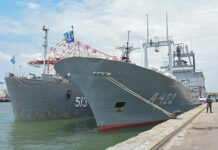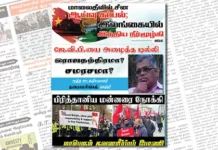As we move into the New Year, it’s clear that as more things change, the more they stay the same. In this sense, the Government’s announcement of the Rs. 229 b relief package fits right into this Government’s now preferred mode of operation – firefighting, as opposed to planning and pre-empting.
The funds for the relief package, Finance Minister Basil Rajapaksa has assured, will be sourced from within the budget, without any new taxes being implemented. How this can be done from within a budget that already had a vast amount of question marks surrounding its viability, is anyone’s guess.
Some have already speculated that the Government might look to print even more money, a move that would be akin to dressing a bullet wound with sellotape, while the Government itself is busy petitioning for more time as they seek debt relief from their various lenders.
Sadly, the only move that does not seem forthcoming, is the one that increasingly seems to make the most sense – enlisting IMF aid.
Despite many activists and Opposition politicians pleading with the Government to enlist such assistance, highlighting it as among the safest ways to gain the necessary relief, the Government, has instead chosen to utilise a combination of loans and currency swap agreements while simultaneously continuing to print record levels of new money.
So, it’s important to ask at this juncture, why has the Government been so resistant to IMF aid?
To gain a clearer understanding, let’s first look at what IMF aid actually entails. While the IMF mainly deals in providing lending programs, governance diagnostics and capacity building, much of this relies on them working closely with governments on issues related to governance and anti-corruption. Further, in terms of the IMF’s COVID relief programs, in return for its help it requires a great deal of transparency from the recipient governments as to how and where the money is being spent. And therein lies the rub. This Government is understandably hesitant to have prying eyes from ‘the West’ looking into its dirty laundry, so to speak.
Transparency has never been a strong point of a Rajapaksa regime, and this Government in particular has gone out of its way to highlight the need for and benefits of autocratic decision-making – even if this has led to on some occasions half-baked decisions being reversed. Further, the many public requests for details and breakdowns of spending from the Itukama fund have also fallen on deaf ears.
So, it’s understandable that the Government would be hesitant to enter into an agreement with the IMF, as it would very likely open the door for criticism from the public and Opposition alike if any of its old skeletons were to fall out of the proverbial closet. Moreover, there is a body of evidence to suggest that IMF assistance – something that Sri Lanka had previously utilised in 1988 and 2008 – has in the past worsened Sri Lanka’s economic situation due to their strict conditions.
However, with the country’s economy in as dire a state as it has ever been, now is not the time to protect one’s political standing, while it’s hard to imagine that the conditions imposed by the IMF could be any worse than the predicament facing the public at present. The goal of the Government right now is to eliminate the country’s macroeconomic imbalances, resolve the debt crisis, and boost investor confidence. As unpalatable as it may seem in some quarters, the IMF might just be the best way to achieving those goals.
FT Editorial, 5 Jan 2022





